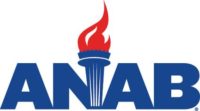EVENDALE, OH-The GE/Rolls-Royce Fighter Engine Team has surpassed a major test goal for 2010, launching tests on the sixth new F136 engine this year.
The F136 test team also passed another milestone: running a full propulsion system for the first time with the common hardware for short take off/vertical landing (STOV) operation.
Testing began in late November on Engine No. 009, an endurance engine, and Engine No. 006, which was re-configured into STOVL mode following earlier tests. The F136 team has compiled more than 850 test hours in 2010, with a goal of reaching 1000 by year’s end. Four F136 engines, at three locations, are testing concurrently for the first time.
The GE / Rolls-Royce decision in 2005 to resize the F136 engine with a larger core and higher-flow fan is proving fortuitous as test engines are being run to extreme flight conditions. The resized core and fan provide a low-risk solution for the F136 System Development and Demonstration program, and the engine will enter production with cooler running temperatures. That will translate into a long-term maintenance cost advantage as high as 25 % over the competing JSF engine. The engine testing has verified the temperature advantage as predicted.
Full flight envelope testing necessary to validate the F136 performance model; to demonstrate meeting specification thrust requirements; and to integrate the engine control software with the Joint Strike Fighter F-35 aircraft is being conducted on an F136 development engine (No. 005) at the U.S. Air Force Arnold Engineering Development Center (AEDC) in Tullahoma, Tennessee. Engine No. 005 has accumulated more than 330 hours of testing and is expected to continue running at AEDC for several more weeks.
“We are eager to complete measurements of F136 installed thrust and operating temperatures throughout the flight envelope. The engine has already demonstrated the capability of [more than] 15% thrust margin against specification at sea level, static condition,” said Al DiLibero, president of the GE Rolls-Royce Fighter Engine Team. “The AEDC testing has confirmed for us that the F136 is performing at, or better than, all of our test expectations.”
Since the JSF specification includes the propulsion system losses associated with installing the engine into the aircraft, the F136 engine was tested as if it was installed in the aircraft for a true comparison of capability available to the warfighter. On an uninstalled basis, the thrust margin at the sea level, static condition is significantly greater.
Outstanding F136 performance demonstrates the vital role that the engine will play competing in the Joint Strike Fighter program over several decades. GE / RollsRoyce recently completed the fifth year of the team’s System Development and Demonstration contract with the federal government’s Joint Program Office.
Get our new eMagazine delivered to your inbox every month.
Stay in the know with Quality’s comprehensive coverage of the manufacturing and metrology industries.
SIGN UP TODAY!Copyright ©2024. All Rights Reserved BNP Media.
Design, CMS, Hosting & Web Development :: ePublishing


